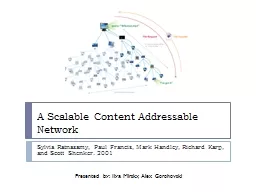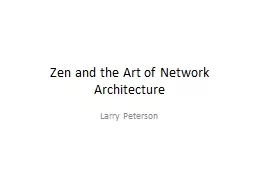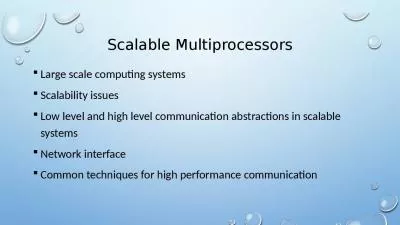PPT-Designing a Scalable Network
Author : phoebe-click | Published Date : 2015-10-10
Infrastructure Dr Natheer Khasawneh Rafat A Dasan This chapter will cover DCs structured cabling and outline the importance of a wellorganized physical hierarchy
Presentation Embed Code
Download Presentation
Download Presentation The PPT/PDF document "Designing a Scalable Network" is the property of its rightful owner. Permission is granted to download and print the materials on this website for personal, non-commercial use only, and to display it on your personal computer provided you do not modify the materials and that you retain all copyright notices contained in the materials. By downloading content from our website, you accept the terms of this agreement.
Designing a Scalable Network: Transcript
Download Rules Of Document
"Designing a Scalable Network"The content belongs to its owner. You may download and print it for personal use, without modification, and keep all copyright notices. By downloading, you agree to these terms.
Related Documents














